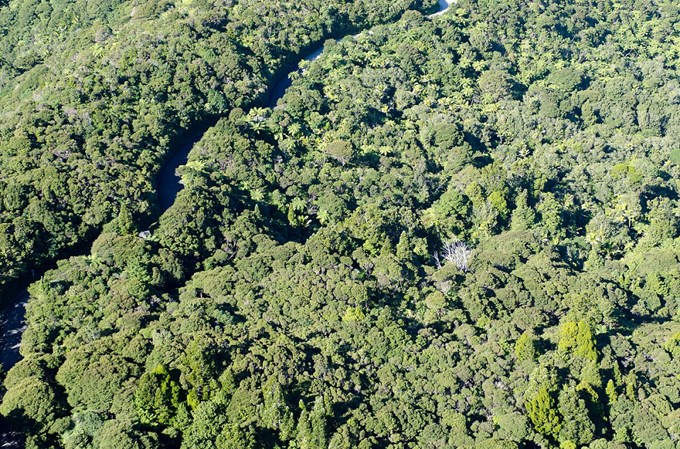A helicopter will be making the rounds over Waiheke Island and Aotea over the next few weeks surveying for kauri dieback disease.
The aerial survey is a follow-up to earlier aerial monitoring undertaken in the Hauraki Gulf in March and April 2019, and aims to get a closer look at where there is poor health in kauri tree canopies.
Auckland Council’s Kauri Dieback Biosecurity Manager Lisa Tolich says getting up in the sky to photograph kauri helps to build a full picture of the extent of disease.
“The helicopter carrying out the survey is likely to be seen tightly circling over areas of forest,” she says.
“Photographs are taken of stressed or dying trees, these spots are mapped using GPS and then experts follow up for an investigation on the ground with soil samples taken where needed.
“If any spots are mapped on private land, we reach out to the landowners and ask for permission to take soil samples. Monitoring as many trees as possible is an important part of our work to protect kauri.”
Completing the aerial survey, which is followed up by the on-the-ground examinations, will help inform the council’s ongoing management plans for kauri dieback.
“On Waiheke, kauri dieback is currently undetected so we need to make sure we all do our bit help protect trees by scrubbing and spraying our shoes when we visit open tracks and arrive onto the island,” adds Ms Tolich.
The case is different on Aotea/Great Barrier Island where the pathogen that causes kauri dieback was first reported at Whangaparapara in 1974. However, the distribution of the pathogen across the island has never been fully studied.
Ms Tolich says given the high volume of infected trees on Aotea it’s important to take care not to spread soil from the island to uninfected areas.
“We all have a responsibility to limit the spread of kauri dieback so remembering to scrub, spray, stay is really relevant on Aotea – we don’t want to spread the pathogen from one part of Auckland to another on the bottom of muddy shoes.”
The Hauraki Gulf survey is part of Auckland Council’s kauri dieback active monitoring programme, with each area of Auckland surveyed on a five-yearly rotation.
For more information on Auckland Council’s kauri dieback management programme, visit aucklandcouncil.govt.nz/protectkauri and for general information on kauri dieback disease, visit kauridieback.nz


